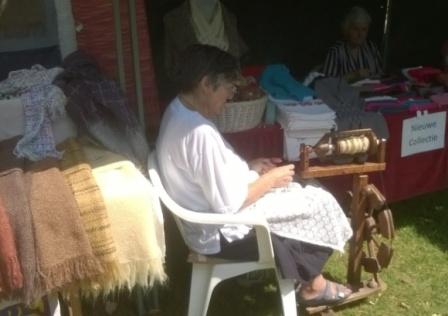By spinning the wool fibers are twisted together into a stronger thread. The number of turns which the yarn is spun, is called the amount of twist.
You can just use your fingers to turn the wool together. So you usually make a start wick. Then continue with a tool.
A (drop) spindle is a wooden needle, weighted with a slice (wood, clay, stone). Attach the leader (starter wick) onto it and hang it down. Take a strand of wool fluff about some of the desired thickness, and turn it around the leader. Now give the (spin(ning))top a push to turn around and fluff between each run some wool loose to feed the wire. If the spindle is going to hit the ground, you wind the yarn around it and go on spinning. Provided some exercise, you can spin very thin and equal wires. The spinning spindle twists the yarn.

A wool thread can be extend without knotting: break off a piece (don’t cut!), Make both ends loose and fluff them a little. Those frays you can assemble and role along between your hands (with some saliva).
With a spinning wheel is even easier, better and faster. With a treadle you keep the drive wheel rotate. The connecting drive snare rotates the bobbin. On the block is a start wick tied and put through the maiden bearing. Here you attach the wool to it.
The spinning wheel was invented in India are around 700.
With a brake, we can increase or decrease the tension so that the bobbin rotates faster or slower. The thickness of the wire is determined by the amount of wool that you feed through the bearing. After some practice you will find all the necessary feeling for it.
When Brigitte opened her knitting store, I gave her a gift: a big jar with 3 wool fish (Cetacea lane). It fits perfectly with her business. Now she has to shave every month course. But after years it still provides an interesting chat with the customers. A wool fish is not commonplace. And there are, though he stands in the window, still customers who do not believe a woolfish really exists.
